

Deformation Of Metal And The Effect On Open Gears
Posted on 05/25/20 in: Technical Knowledge | | General Industry | Author: Mike Holloway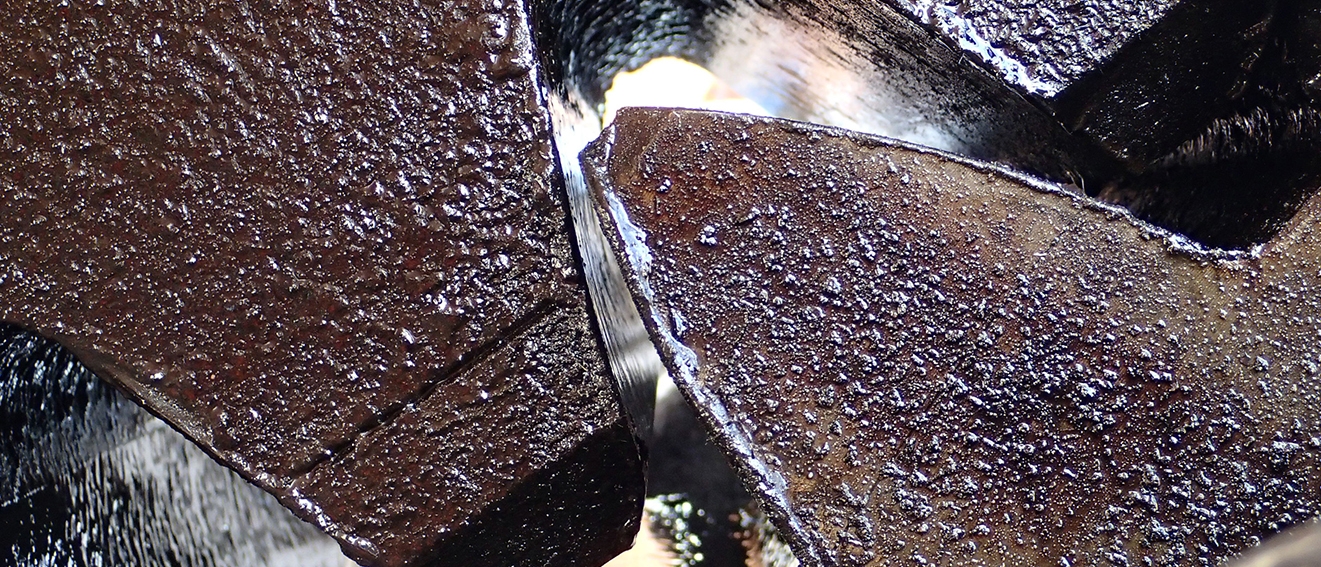
When we think of metal, it is difficult to consider that it is compressible and even more interesting is that it can recover after being compressed, behaving like a spring.
It is convenient to express the elasticity of a material with the ratio stress to strain, a parameter also termed as the tensile elastic modulus or Young's modulus of the material - usually with the symbol - E. Young's modulus can be used to predict the elongation or compression of an object.
Young's Modulus also known as the Modulus of Elasticity or the Tensile Modulus, is a measure of the stiffness of a material. It is used to describe the elastic properties of materials when they are stretched or compressed.
In engineering terms, it is defined as the ratio of stress which is force per unit area along an axis of strain which is the ratio of deformation over an initial length. It can be used to predict the elongation or compression of an object as long as the stress is less than the yield strength of the material. If the stress exceeds the yield strength then a fracture occurs.
The following graph (Graph 1. E-modulus of Elasticity v. Temperature) represents some common metals at various temperatures according to ASME B31.1-1995. As expected, aluminum and copper are more compressible than various types of steel. What is interesting is titanium. Titanium is often considered a very strong, lightweight metal used extensively in aerospace applications. The pressures that airframes experience along with the pressure differentials allow for titanium to be an excellent choice.
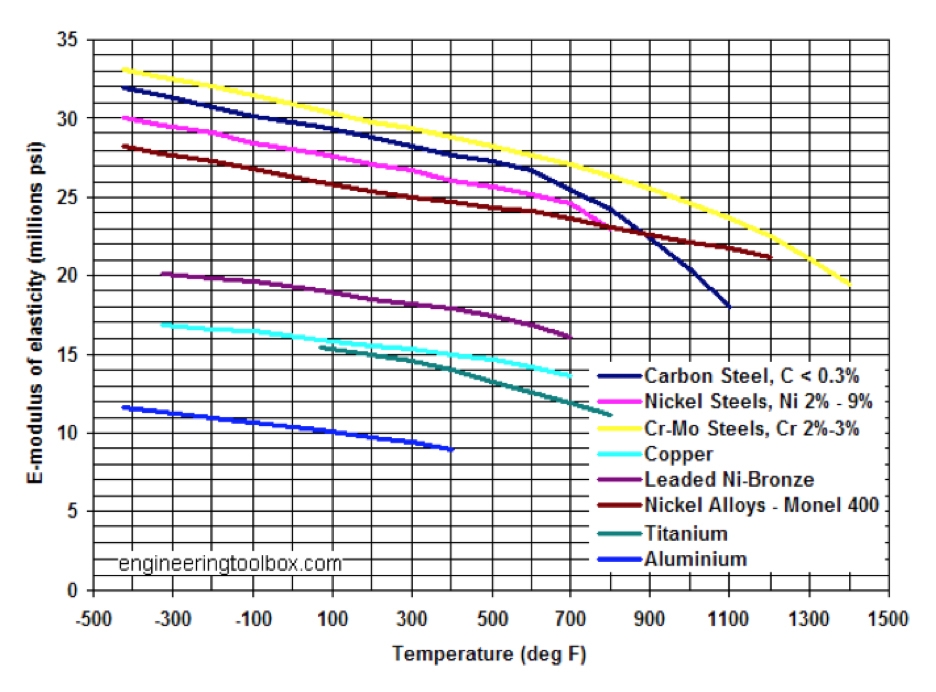
Graph 1. E-modulus of Elasticity v. Temperature
Gear teeth, especially open-gear teeth, experience excessive load as well as high temperatures. The metal can experience Elastic Deformation as well as a condition known as Plastic Deformation. The two are very different. Elastic Deformation is the recovery to the original dimensions when the stress is reduced. When the stress is so great that the material no longer is elastic, the Elastic Limit is achieved. In the metal crystals, the atomic bonds are stretched when load is applied. Elasticity occurs when the atoms return to their original positions after this load is removed. Elastic deformation does not cause permanent atomic changes therefore it does not contribute to the strength of metals. An example is how a rubber band can be stretched when stressed and regain its shape when the stress is taken off.
With Plastic Deformation, the Elastic Limit is exceeded, and a permanent set is established when the stress is removed. The metal grains are made up of metal crystals that have bonds that keep them in association. When these are broken, reversal to the original shape is no longer possible. Plastic Deformation proceeds in distinct stages. First, it leads to strain hardening, followed by necking (narrowing of object), and finally the fracture of the object at the narrow portion, if the force is continuously increased.
An example of Plastic Deformation would be how bent wire doesn’t snap back to its original shape. Plastic deformation involves the breaking of a limited number of atomic bonds by the movement of dislocations. The force needed to break the bonds of all the atoms in a crystal plane all at once is very great. The movement of dislocations allows atoms in crystal planes to slip past one another at a much lower stress level (Fig. 1 – Fatigue Crack Initiation).
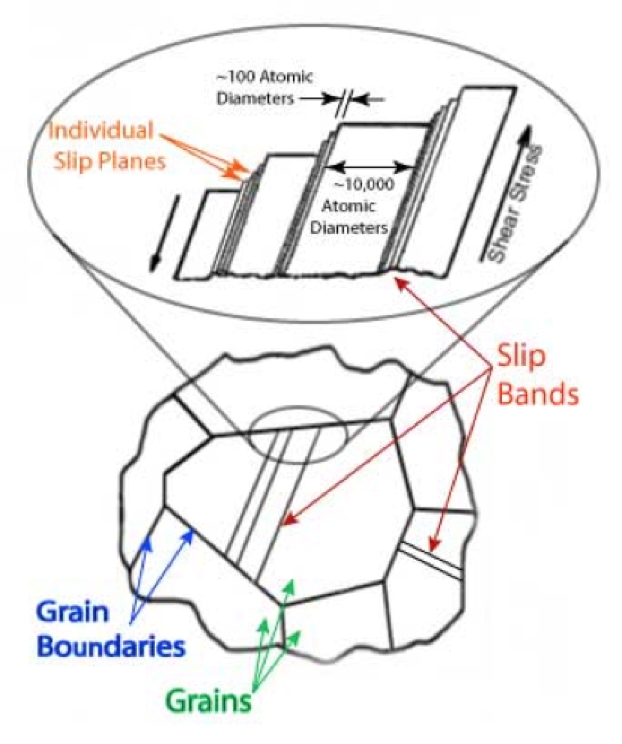
Fig. 1 - Fatigue Crack Initiation
Metal fatigue is one of the primary reasons for the failure of open gears. The lifecycle of a fatigue crack on a gear face has two phases, the initiation phase and propagation phase. Dislocations play a major role in the fatigue crack initiation phase. After a large number of loading cycles, the dislocations pile up and form structures called Persistent Slip Bands. The Persistent Slip Bands that rise above the surface are called Extrusions, the ones that fall below-called Intrusions. Steps form on the surface and serve as stress risers where fatigue cracks initiate (Fig. 2 – Slip Planes).
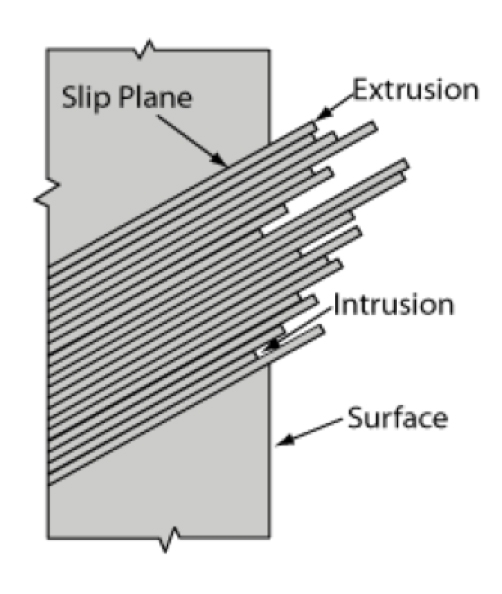
Fig. 2. Slip Planers
Another failure mode is Plastic Flow (Fig. 3. Plastic Flow). This occurs on the gear tooth surface when subjected to high contact stress under rolling or sliding action. Gear surface deformation takes place due to the yielding of surface or subsurface material. Normally it occurs in softer gear materials, but it can occur even in heavily loaded case hardened gears as well. Moderately loaded gears that use softer metals can develop a narrow band of bright finish along the pitch line. Gears that run for a longer time or with heavier loads, will often exhibit a ridge along the pitch line of wheel and form a groove in the pitch line of the pinion gear. The direction of the gear will dictate the flow of the material on the teeth of the driven gear. This leads to the formation of a ridge at the gear line. In driving gears, the flow is away from this line and a groove is formed. Reduced viscosity of the gear oil or the base oil viscosity of the open gear grease along with the lack of surface hardness are the reasons for plastic flow.
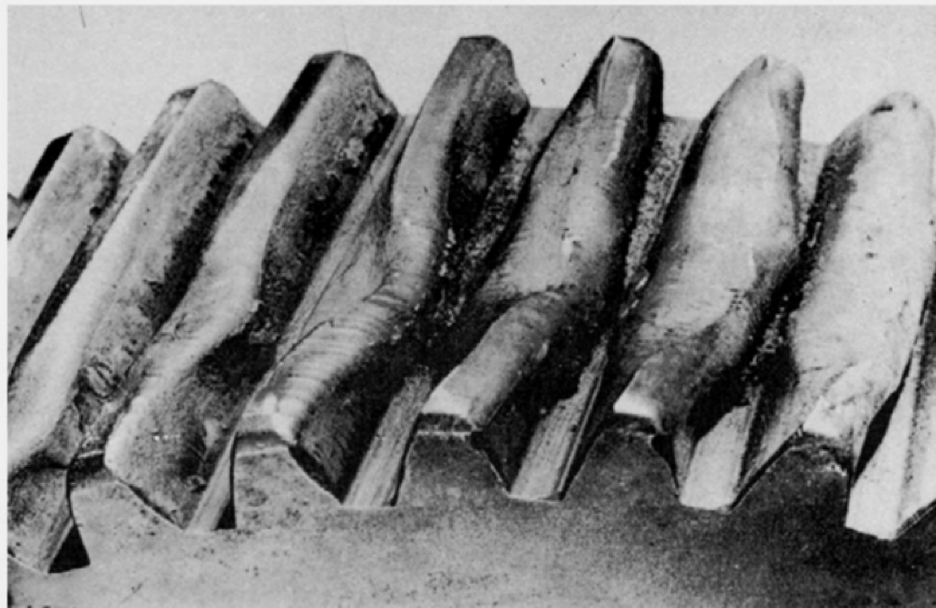
Another failure mode is called Rippling, which is a periodic wave-like formation at right angles to the direction of sliding surface of the gear face (Fig. 3 Rippling). It has a scale-like appearance and is normally seen on hardened gear surfaces.
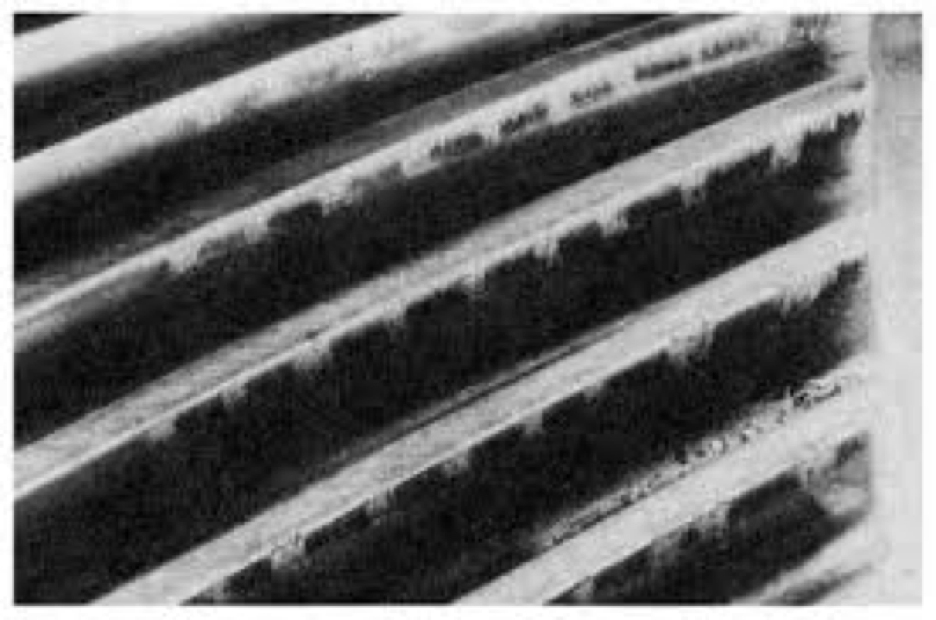
Fig. 3. Rippling
The differences in gear materials, materials processing, and gear operating properties may significantly affect the amounts of such plastic deformations that occur before tooth breakage and the operating duration between initial damage detection and tooth breakage. Open gear lubricants provide protection against corrosion but also establish a protective surface coating to prevent wear. The open gear lubricant can also protect against shock and impact which will reduce surface fatigue.
Tags: Open Gears, Young Modulus, Elastic Modulus, Elastic Deformation, Plastic Flow, Fatigue Crack Initiation, Rippling